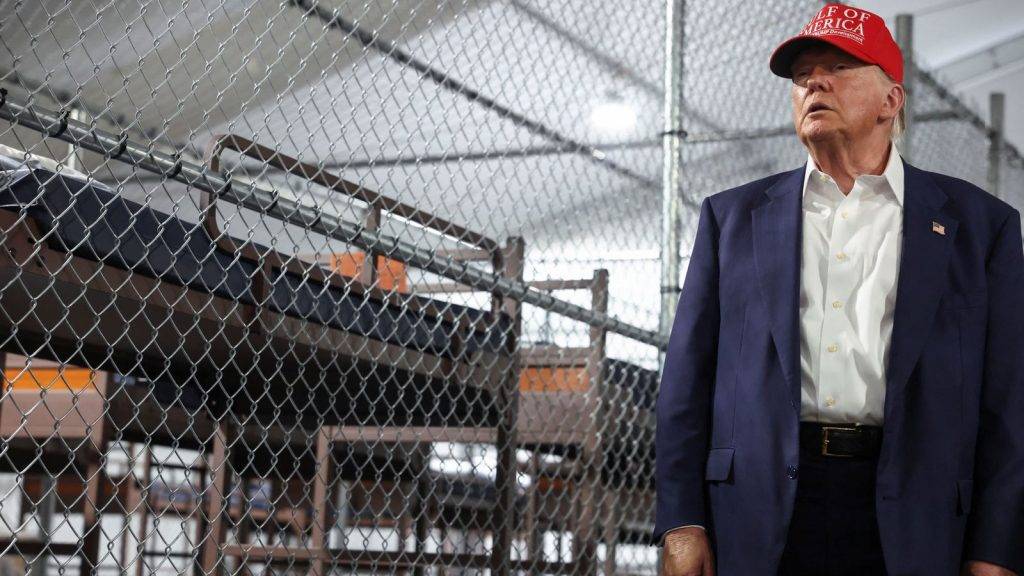Cliff Notes
- Florida’s new ‘Alligator Alcatraz’ detention centre, prioritised for migrants, symbolizes the Trump administration’s aggressive deportation strategy amid criticism of its inhumanity and high operational costs.
- The facility, located at an abandoned airport in the Everglades, is projected to accommodate 5,000 detainees at an annual cost of $450 million, utilising repurposed FEMA emergency trailers.
- Critics, including activists and former politicians, have condemned the centre as a “theatricalisation of cruelty,” highlighting concerns over inhumane conditions during extreme weather and the potential for significant human rights violations.
‘Alligator Alcatraz’: The airport of the future becomes symbol of Trump’s migrant clampdown
“If people get out, there’s not much waiting for them other than alligators and pythons.”
That’s what Florida‘s attorney general has said about the new ‘Alligator Alcatraz’ detention centre in the southern US state.
It is a symbol of the White House’s determination to deport migrants from America which it says do not have a right to be in the country.
Located on a mostly abandoned airport once built to house supersonic jets, detainees would have to “know how to run away from an alligator” to escape the facility, President Donald Trump said on Tuesday.
But for critics, it’s a dehumanising “theatricalisation of cruelty” that will cost hundreds of millions of dollars to run each year.
What is Alligator Alcatraz?
The Dade-Collier airport was once destined to be the world’s largest airport and would have been five times the size of New York City’s JFK, but it never fulfilled its potential.
Instead, the 39-square-mile facility located about 50 miles from Miami has been used as a training facility for years – until now.
“This is an old, virtually abandoned airport facility right in the middle of the Everglades,” Florida’s attorney general James Uthmeier said as he introduced it last month. “I call it: Alligator Alcatraz.”
He touted it as an “efficient, low-cost opportunity” to build a “temporary” detention centre “because you don’t need to invest that much in the perimeter”.
It’s believed that the facility could house 5,000 detainees when up and running and, according to CNN, will cost $450m (£328m) annually.
Mr Uthmeier added: “If people get out, there’s not much waiting for them other than alligators and pythons. Nowhere to go, nowhere to hide.”
People sent there will be housed in repurposed Federal Emergency Management Agency (FEMA) emergency trailers and “soft-sided temporary facilities”.


